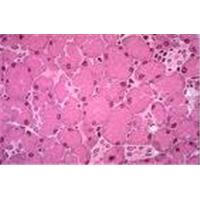

There are two main types of diabetes mellitus: type 1, known as insulin dependent diabetes, and type 2, adult onset, non-insulin dependent diabetes.
Diabetes mellitus is one of the most common chronic diseases in developed countries. It is caused by a lack of or resistance to insulin, the vital hormone that regulates blood sugar levels. Without enough insulin, the amount of sugar in your blood rises (hyperglycaemia), which can seriously damage the heart, eyes and kidneys.
Type 1, which usually affects people under 40, develops if the body can’t produce any insulin. It is treated by insulin injections and diet, plus regular exercise. Type 2, the most common, usually affects over-40s, and is treated by diet and exercise, and sometimes with tablets or injections.
The main risk factors for type 2 diabetes are being overweight or obese, having a diet high in saturated fat and low in fruit and vegetables, consuming excessive alcohol, smoking and being inactive. The warning signs are increased thirst, the need to urinate frequently, unusual tiredness, blurred vision and frequent skin and fungal infections.
Diabetics need to avoid animal fat, refined and particularly sugary foods. Eat small meals every three hours, with plenty of fibre-rich fresh fruit and vegetables, beans, lentils and whole grains (eg, oats); these contain slow-release carbohydrates to give your body glucose without sending your blood sugar levels rocketing. You can even eat a little sweet food afterwards, because the fibre slows down the sugar absorption into the blood, giving the body time to process it.
Lots of water is vital (try for ten glasses daily between meals), partly to help swell the fibre. New research suggests that eating oily fish (eg, salmon, sardines, mackerel and tuna) improves blood sugar control. Alternatively take a 500mg omega-3 oil supplement three times a day. The minerals chromium and magnesium also seem to help. The suggested daily dose is a 200 microgram chromium sulphate supplement and a 50mg magnesium supplement once a day. Chromium-rich foods include apples, eggs, nuts, mushrooms, tomatoes and broccoli.
Magnesium is found in sunflower and pumpkin seeds, peanut butter and milk. It is also known as nature’s stress reliever. Many tension headaches are linked to magnesium deficiency. You can get the recommended daily intake of 300mg from a pint of milk. But if you feel you aren’t getting sufficient magnesium from your diet, take a supplement, but don’t exceed 300mg daily.
For more information, contact the Diabetes UK careline on 0845 120 2960;
www.diabetes.org.uk or the American Diabetes Association at www.diabetes.org
